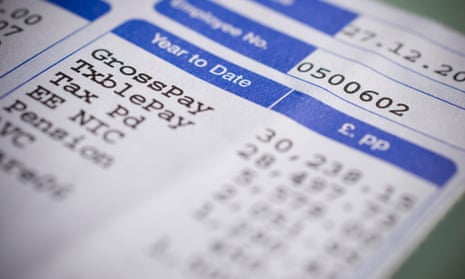The first figures on investment returns from workers pushed into auto-enrolment pensions five years ago were revealed this week and can be read as a roaring success – or an indictment of how miserable a financial future most workers face in retirement.
The earliest wave of employees began paying into the government-mandated schemes in October 2012, mostly staff at giant companies such as Tesco, Sainsbury’s and G4S.
Figures from pension company Aegon reveal that for someone earning the average UK wage of £26,500 who met the basic requirements of the scheme, their pension pot after five years is now typically worth £2,440.
For many people, £2,440 will seem a puny amount – handy to buy an ageing second-hand car, but hardly enough to secure more than a few months of income in retirement.
However, as Aegon points out, the £2,440 reflects the small amounts that workers have had to pay in so far – something that will change dramatically over the next couple of years.
For the past five years, employees have had to pay in just 1% of their income above a certain threshold (currently £5,876), which after tax relief works out at only 0.8% of pay. Employers have had to pay in 1% of the worker’s salary, so in total, just 2% of salary has been going into the new-style pensions.
Aegon has calculated that over five years, the person earning £26,500 has paid in £786 from their salary, had £983 from their company and £197 from tax relief. Meanwhile, on the stock market the value of the money has risen by £474.
“There are some positive things about auto-enrolment,” says Kate Smith of Aegon. “People are saving consistently. The bad news is that too many are saving just 2% of their salary, and overall the amount they are saving is less. The big problem is the contribution rate.”
But from April next year, the minimum total contribution rises to 5% and in April 2019 it jumps to 8%. So will employees squeezed by inflation running above pay settlements and possible interest rate rises over the next year be able to afford the new contribution rates?
In April, the amount that will be taken from employees’ wages triples from 1% to 3% of salary, and then the following April it jumps to 5% of pay (though workers get tax relief on these). Until now, few employees have taken up their right to opt out of automatic enrolment, but that figure may rise steeply next year.
“There are a lot of other pressures on incomes – from inflation or possible rises in mortgage rates – plus Brexit is a big unknown,” says Smith.
How much will the pensions be worth once the higher rates of contribution begin? Aegon estimates that our worker earning £26,500 a year will see their pension pot grow to around £11,430 over the next five years. Someone who increases their contribution by just 2% of their salary could see their pension pot grow to £33,480 within 10 years.
Like most pension experts, Smith estimates that workers should put aside 15%-20% of their wages to build up enough of a fund to pay for retirement. But she is realistic enough to know that’s beyond the reach of most people.
“It’s a shockingly high figure and you have to be realistic and know that for many people it’s not going to happen. The state pension will be the core income for many of these people, with auto-enrolment being a top-up pension.”

Comments (…)
Sign in or create your Guardian account to join the discussion